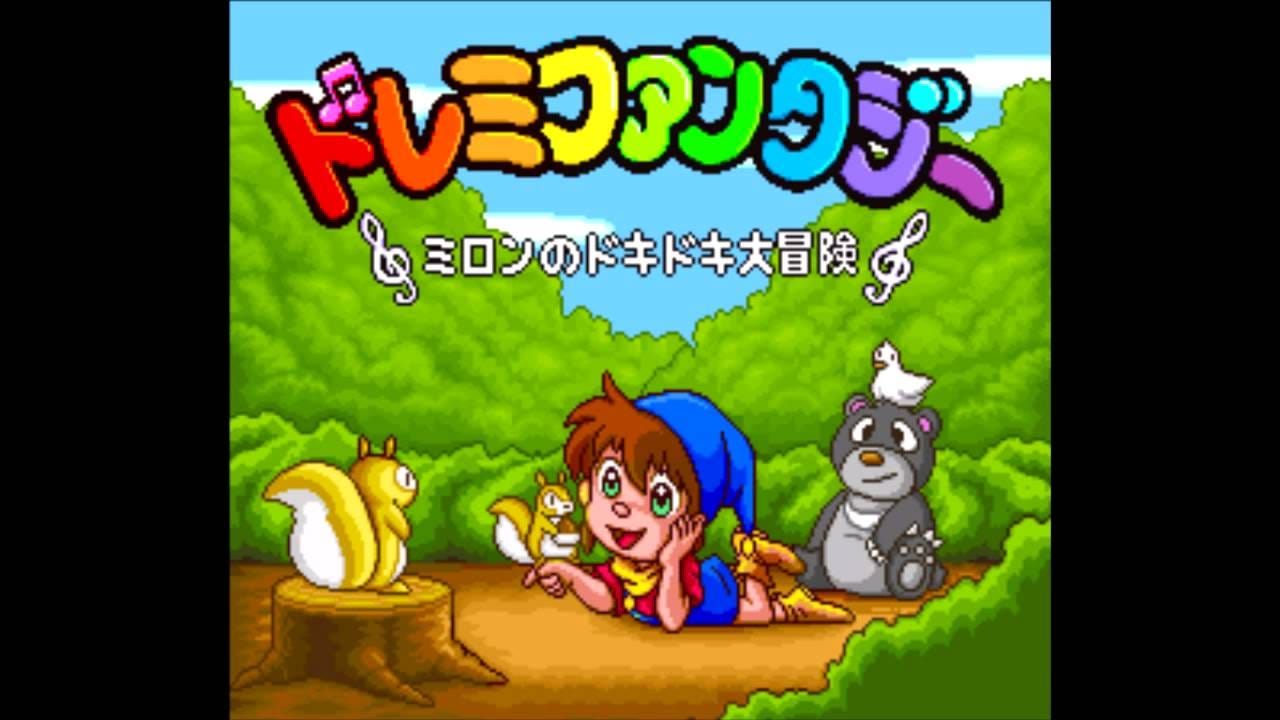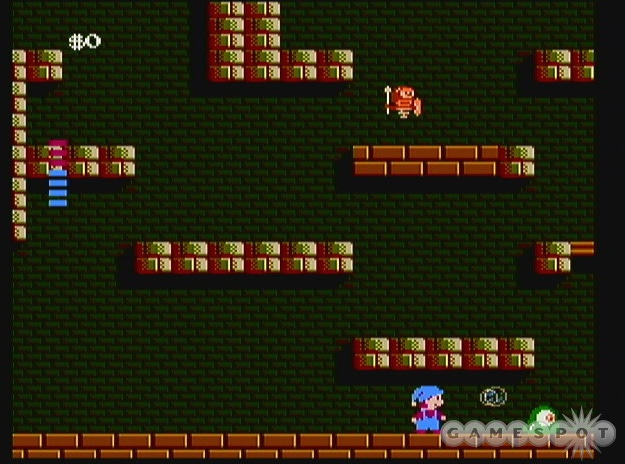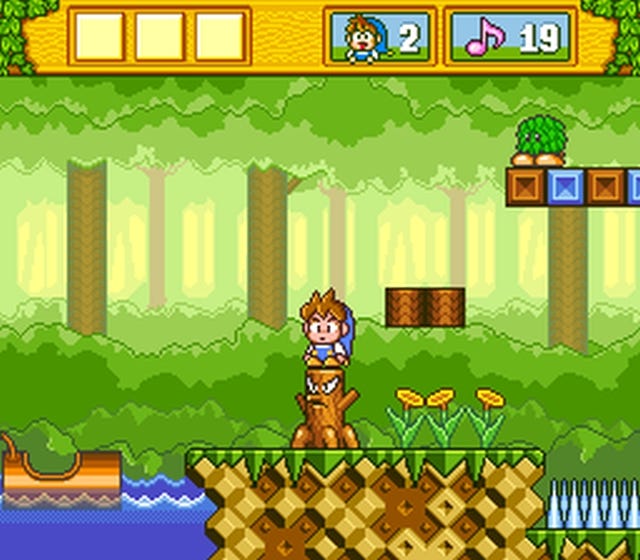Remembering Hudson Soft: DoReMi Fantasy: Milon's DokiDoki Adventure
How are there not more Milon games? At least we've got the two.
Hudson Soft, founded in the 70s, did just about everything a studio and publisher could do in the video game industry before it was fully absorbed into Konami on March 1, 2012. For the next month here at Retro XP, the focus will be on the roles the studio played, the games they developed, the games they published, the consoles they were attached to, and the legacy they left behind. After all, someone has to remember them, since Konami doesn’t always seem to. Previous entries in the series can be found through this link.
Thirty five years later, you’ll still find just two reactions to mentions of Hudson Soft’s NES title, Milon’s Secret Castle:
Fuck yeah, Milon’s Secret Castle
Fuck Milon’s Secret Castle
I get the sense that people who played Milon’s Secret Castle closer to its original release date have fonder memories of it. It is very much the kind of game that would have been slapped with the “Nintendo Hard” description, given you don’t begin a life with full health and get very little direction about where to go: it’s a platformer where basically the entire castle is an interconnected puzzle that requires you do a lot of exploring and experimenting and hedging. Milon moves a little odd, as he needs to get a bit of a running start, and his attacks — blown bubbles — move both horizontally and vertically, so you need to learn to aim them instead of just firing in front of you and assuming the best. Oh, and you can only damage bosses by hitting them directly in the face, so those encounters sometimes take some time and retries.
Back in 1987, though, or during the NES era in general, all of these sorts of things were more acceptable. You read the manual before you played your new game, you figured out what you had to do from its pages, and then you did it in the game itself. You knew what the items you picked up did, because the manual let you know, even if the game did not. And cryptic in-game hints about where to go next or what you might need an item for were better than no hints at all, which plenty of games were happy to — well, not provide you with, the opposite, really, but you know what I mean.
The way games were developed, and what gamers expected from them, changed in the years and decades that followed. Milon’s Secret Castle was something of a one-off for North American audiences: there was a Game Boy release — which made a couple of nifty quality of life improvements like letting Milon’s movement be smoother and letting bosses have more weak points than their faces, but otherwise it’s a port of the original — but other than that, the series wasn’t a series at all as far as the international audience was concerned. So, when the original Milon’s Secret Castle emerged from cryogenic sleep and ended up on the Wii Virtual Console, people who had played the game back in the day were pleased, and those who had not, who grew up with very different expectations of how you were supposed to interface with a video game and how it was supposed to respect you and guide you along from the start, were not. Like, notably not.
GameSpot’s review said it was, “easily one of the worst games ever made” and awarded it a 2 out of 10. IGN scored it a 4 out of 10, writing that, “Like any old-school game from the '80s, Milon has its own small, cult following -- but new players not already familiar with the title will simply feel frustrated, lost, and cheated out of their money.” Even Nintendo Life, which I enjoy quite a bit for their ability to see the reasons why someone might be into a game others would deride, rated it a 3 out of 10 and concluded that, “There are probably many Milon fanboys out there reading this review and cursing under their breath, but to be brutally honest it's hard to see why this game has built up such a following over the years - it stinks.” I’m not even going to get into the famous video review of the game that claims Milon’s Secret Castle is for “little girls” because the protagonist shoots bubbles instead of carrying around a flaming sword or whatever. Bub and Bob shoot bubbles, too, and they’re dragons, man, you got a problem with dragons?
Anyway, you can probably guess which side of the debate I’m on. I actually didn’t play Milon’s Secret Castle back in the day, or even during its first release on a Virtual Console, but instead picked it up on the 3DS eShop sometime after it ended up there in 2013. It very much is a game from 1987, yes, and if you don’t have the patience for that sort of thing, well, yeah, you’re going to hate it. It’s certainly not “one of the worst games ever made,” though, and people have assuredly heard of it and even enjoyed it, despite published claims otherwise. I’m not much for scoring video games in a review, but if you want to ding Milon’s Secret Castle for the era it was released in and what that means for the gameplay while trying to account for all possible tastes, something like a 6/10 is much more appropriate than the level of derision it got.
That’s just a number, though: it’s more effective to say what has already been said before. Milon’s Secret Castle is a game that requires you check out the manual beforehand to see what you’re doing, and in the present, that means looking at a FAQ or a guide to get a rundown of what items do and are for, and how you should be behaving while you play — such as how you should be firing off bubbles anywhere that looks suspicious, or making sure you’re hitting plenty of blocks from underneath, Mario-style, in case something hidden is there, like a health bonus that fully restores and increases your health bar or an upgrade to your bubble blasts that grants you more of a rapid-fire approach. It’s a short game, if you know what you’re doing: the key is in finding these hidden paths and items and upgrades, in collecting enough money to pay for the key items found within the shops, and in not losing patience when you’re trying to stay alive against a boss. Again, it’s very 1987, but it’s good at what it does, and unlike much of what you find today, even within retro-focused spaces.
That sort of thing is untenable for some, who just want a game to educate them as they play through very obvious tutorial sections and what have you, and I’m not here to criticize that preference, either: not everyone wants to have to guess or experiment or look to a guide to get along. It’s not like everyone enjoys playing even the modern jewels of the “figure it out” genre, such as Breath of the Wild or FromSoftware’s Souls games: given that, I can certainly understand why there are people out there who believe Milon’s Secret Castle exists to torture them, even as I myself think it’s a good time.
So, yeah, Milon’s Secret Castle: it’s good, if you’re into that sort of thing. It’s a shame that a thing we could all agree on — that its sequel is excellent — isn’t easily achieved, as DoReMi Fantasy: Milon no DokiDoki Daibouken, like so many SNES-era games, only released in Japan. (I’m not kidding: there are more Japan-exclusive Super Famicom games than there are North American releases in total.) DoReMi Fantasy: Milon's DokiDoki Adventure as it’s known in English, is available to emulate, and there even is a fan translation for it, but even if you have only played the original, fully Japanese edition of the game, you likely had a great time.
It is very much the opposite of Milon’s Secret Castle in terms of its designs and expectations. The thing it has the most in common with, vibes-wise, is probably Kirby. It’s very cute — very cute — with lovely little bits of animation work for the movements and faces and reactions of Milon and the other characters in the game. The characters and their animations are full of life It’s slower-paced, and certainly not difficult, though, the lack of difficulty is not an impediment to enjoyment, either. “Not difficult” doesn’t have to be the same thing as “boring,” and thanks to how it looks and sound and feels to play, it’s certainly not boring.
There is still a focus on exploration, but it’s less… random isn’t the right word, but DoReMi Fantasy’s version of it is more focused than the originals, and on finding hidden rooms and corners of stages than on hidden items instead of on constant vigilance. The levels aren’t particularly lengthy, but they do have correct and incorrect exits, and after the first world, there is also an item, a star, that you must collect in every stage in order to advance to the world’s boss. So, exploration is vital, since it’s how you find the path that actually advances you to the next level, and how you’ll stumble upon the stars you need to make it to the bosses and subsequent worlds.
Given it released a full decade after the original, it also has a very different feel in terms of what it expects from you, and it’s more platformer than action-adventure. You no longer have a health bar, but instead, Milon’s outfit changes depending on how many more hits he can take before dying. You start out wearing a red outfit, and can change that to blue and green by acquiring health upgrades. Each hit you take will knock you back to a previous outfit, and if you’re struck while in red, you lose a life. You can gain new lives by collecting extra life items, or with 100 music notes, which are scattered around each stage like coins in Mario games.
You’ll also find upgrades that you hang on to until you die, like winged shoes that allow you to slowly float down after jumping, or the balloon that saves you from one (1) death by falling, or upgrades to your bubble gun that let you shoot further and more often. (There is also a charge attack that lets you fire bubbles in all directions, extremely useful for destroying obstacles and maybe finding something hidden.) Those bubbles, by the way, have also seen an upgrade since the 80s: now instead of causing damage to enemies, they ensnare them. Trap a foe in a bubble, and then hit the bubble with Milon’s body, sending it off in the air to never be seen again, and taking out any other enemies it bumps into along the way. You can also temporarily stun your enemies by jumping on them — it won’t kill them, but jumping on foes also won’t hurt you, and it does buy you some time to orient yourself or check out your surroundings.
Gameplay-wise, DoReMi Fantasy doesn’t necessarily do anything brand new. It’s got that aforementioned Kirby vibe at times, it introduced some elements from Mario-style platformers, and the bubbles now work more like they do in Bubble Bobble than they did in Milon’s own first game. The thing is, though, that like with Konami’s Pop’n TwinBee Rainbow Bell Adventures, everything that Hudson Soft threw into the mix here just works so tremendously well together that you don’t care. There’s nothing wrong with someone showing up to refine an idea you’re already aware of, and mixing it with other refined ideas to create something that is at least new in this form, and is supremely enjoyable regardless of its newness? Sign me up. Points for originality and all, but you don’t need originality to score points.
There wasn’t a ton of music in the original Milon’s Secret Castle, but what was there was enjoyable, and that was certainly carried on by its successor. It almost had to be, considering Milon’s Secret Castle and DoReMi Fantasy are both very focused on music and musical instruments: the story of the original game is that Milon lives in a world where people use music to communicate with each other, but he doesn’t know how, and there are hidden mini-game rooms where he has to bounce up and down on drums in order to catch musical notes that will convert into money to buy items and restore health in shops. The sequel is literally called “DoReMi Fantasy,” so yes, music is once again a theme.
The original game’s music was primarily composed by Takeaki Kunimoto, who was also responsible for the soundtracks in titles like Star Soldier, Starship Hector, and RoboWarrior, but he was no longer active as a video game composer by the time DoReMi Fantasy was being made. Jun Chikuma ended up scoring this game, and while it’s very different from much of the music you might know Chikuma for during this era — chiptunes and Bomberman and drum-led, catchy beats — it’s perfect for the kind of game DoReMi Fantasy is.
The Guardian’s Lair is a beautiful track that manages to reflect the atmosphere of the stages it’s utilized in, which are often labyrinthian, contain ghosts, and so on:
The Adventure Begins plays during the game’s opening cutscene (and if you leave the title screen running), and begins with calming sounds fitting for a scene occurring in a forest full of friendly animals — there’s even the sound of a running stream in the background! Then the big bad shows up, and the music changes to something far more sinister backed by instruments much less calming than what the song begins with, and it’s all wonderful:
And then songs like Through the Woods, in addition to being more in line with the Bomberman-esque sound of Chikuma’s work, also add to that Kirby-esque vibe I mentioned. You want to run and jump and be freeeeeeee while Through the Woods is playing, which is very fitting for those stages:
The art also took a leap forward, and, like with the music, was directed by someone known for their contributions to Bomberman: Shoji Mizuno. Part of the change is simply the jump from an early-life NES game to that of a late-life Super Famicom one, sure, but those kinds of leaps in technological capabilities also require a tune-up on the art direction side. Here’s what Milon’s Secret Castle looked like…
…and here’s DoReMi Fantasy:
There is a focus on a much larger sprite in DoReMi Fantasy, and more expression and detail for friend and foe and backgrounds alike, but the most significant change throughout each game is in the use of color. The Super Famicom/SNES was capable of so much more, graphically, than the NES, and not just in terms of raw power, but also in colors. SNES games tend to be brighter, more vibrant, because they could be: NES games were often muted in their tones, and looked like, well, like Milon’s Secret Castle.
Whether you enjoyed Milon’s Secret Castle or not, DoReMi Fantasy is an excellent platformer. It’s lovely to look at, it sounds exceptional, and it’s just a whole bunch of fun to pick up and play. It’s no longer available to purchase or play anywhere, not since the Wii Virtual Console shut down — Hudson had made it available as an import title, in its original Super Famicom form, Japanese text included — but you can emulate the game and even play the fan translation, in lieu of it being otherwise available. And you should: the SNES has a loaded library and no shortage of platformers within, but DoReMi Fantasy still manages to stand out in that crowd despite this. One of Hudson Soft’s finest hours, and one that just wasn’t made available worldwide. A loss for the rest of the world, yes, but one Konami could certainly rectify if they wanted to in the present.
This newsletter is free for anyone to read, but if you’d like to support my ability to continue writing, you can become a Patreon supporter, or donate to my Ko-fi to fund future game coverage at Retro XP.




